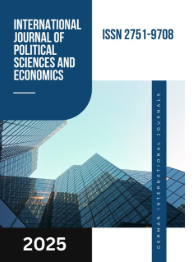DEVELOPING ORAL LANGUAGE PERFORMANCE THROUGH AUTHENTIC MATERIALS
DOI:
https://doi.org/10.55640/Keywords:
language performance, English for Specific Purposes, authentic materials, speaking and listening skills, teaching materialsAbstract
The article addresses one of the most crucial issues related to authentic materials and highlights how to organize meaningful activities for use in ESP lessons in the fields of biology and chemistry. The author proposes methods for organizing various pre-, while-, and post-speaking activities based on two listening tracks and explains how to implement them in actual teaching practice.
References
1.M. Hancock and Annie McDonald (2015) Authentic Listening Resource Pack (Bridging the gap to real-world listening) Delta Publishing: Hoe Lane, PeaslakeSurrey GU5 9SW 2015
2.M. Spelleri From Lesson to Life: Authentic Materials Bridge the Gap.// ESL Magazine. 2002, V. 5/4. pp. 16-18.
3.Ozverir, I., & Herrington, J. (2011). Authentic activities in language learning: Bringing real world relevance to classroom activities. In T. Bastiaens & M. Ebner (Eds.), Proceedings of EdMedia 2011 (pp. 1423-1428). Chesapeake, VA: AACE.
4.Pinner, R. (2012). Examining Authenticity and Motivation from an International Perspective. The JACET-SIG on ESP Annual Report, 14, 26-3
5.Rashidova Feruza, Tillayeva Nilufar, Karimova Zilola, Tursunboyeva Surayyo “English B1” for the 2nd year students of Academic Lyceums and Vocational Colleges; (Tashkent: “O’zbekiston”, 2015. – 104 b).
6.Zorica Antic. (vol.14, No 3. 2007. 141-147 pp). Forward in teaching English for ESP. The Journal of ESP. Cambridge University Press.
Downloads
Published
Issue
Section
License

This work is licensed under a Creative Commons Attribution 4.0 International License.
Authors retain the copyright of their manuscripts, and all Open Access articles are disseminated under the terms of the Creative Commons Attribution License 4.0 (CC-BY), which licenses unrestricted use, distribution, and reproduction in any medium, provided that the original work is appropriately cited. The use of general descriptive names, trade names, trademarks, and so forth in this publication, even if not specifically identified, does not imply that these names are not protected by the relevant laws and regulations.







